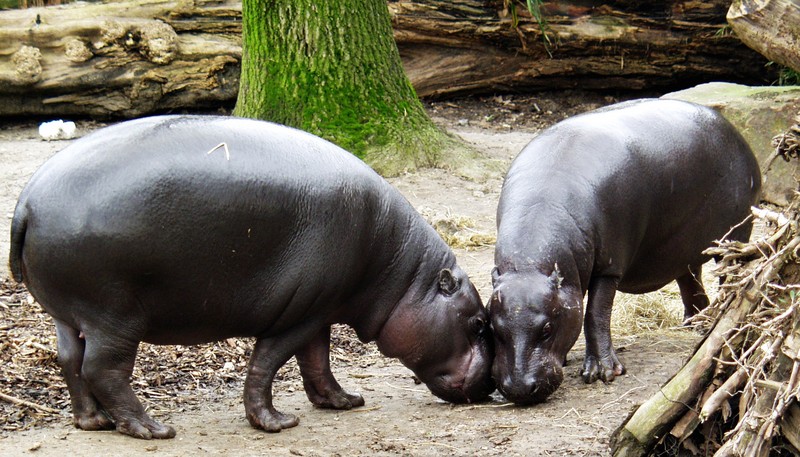| Comments |
|
| | Guest |
|
 |
Pygmy hippopotamus
Choeropsis liberiensis
The pygmy hippopotamus is found in West Africa, in Liberia, Sierra Leone, Guinea and Ivory Coast. It is about half the size of the Nile hippopotamus; it stand 75-100 cm at the shoulder and weighs 160-270 kg. It is basically hairless except for few hairs on the muzzle, inside the ears and on the end of the tail. The skin is black-brown and can produce an oily substance which keeps it moist. There are 4 toes on each foot, almost without webbing between them. The pygmy hippo has only one pair of incisors, while the Nile hippo has 2-3 pairs.
Pygmy hippos are solitary creatures, coming together only to mate. They live in wet forests and swamps, spending most of their time on land, unlike their larger relatives. Both sexes have home ranges; a male's is about 1.6 km2, a female's 0.4-0.6 km2. Home ranges of several animals may overlap, but they seem able to avoid each other, probably through dung marking.
The pygmy hippo's resting places are usually in wet areas, for food they go to higher grounds. They make 'tunnels' or cleared paths in the underbrush, and use these to travel through their territory. They are also excellent swimmers and can walk on the bottom of a river. The nostrils can be closed with muscular valves, which allows them to remain under water for up to 6 minutes. If threatened by a predator, like a leopard, they will try to escape into the water or into thick underbrush. Feeding takes place mainly at night. Pygmy hippos live on grasses, leaves, water plants and fallen fruits; these are digested in the complex stomach with 3 chambers.
Little is known about reproduction in the wild. Presumably it is like breeding in captivity: the male courts the female for a period of two days, mating takes place on land or in the water. The gestation period is 184-210 days. The female gives birth to a single calf which weighs about 3-4.5 kg. When the calf is born, either on land or in the water, it is already able to see, hear and walk. It is nursed for 6-8 months, 2 or 3 times a day. After 4-5 years the pygmy hippopotamus reaches sexual maturity. Its life span in captivity is 35-45 years. |
|
|
